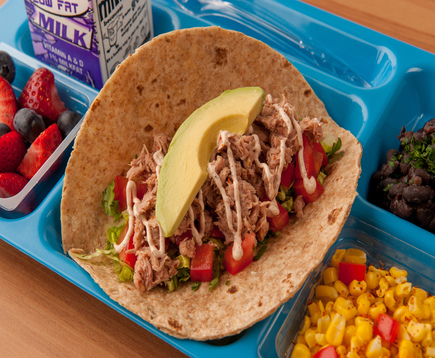
The most recent edition of the Dietary Guidelines for Americans (DGA) was released this past December, and provides Americans with guidance for how they should be eating for long-term health and to help prevent chronic disease. The guidelines are reviewed every five years and are updated based on new evidence and sound scientific research.
The most recent edition of the Dietary Guidelines for Americans (DGA) was released this past December, and provides Americans with guidance for how they should be eating for long-term health and to help prevent chronic disease. The guidelines are reviewed every five years and are updated based on new evidence and sound scientific research.
There are four key principles to these guidelines:
- Make healthy food choices throughout your life.
- Choose nutrient-dense foods and beverages that reflect your personal preferences, cultural traditions and budgetary considerations.
- Focus on meeting food group needs with nutrient-dense foods and beverages, and stay within calorie limits.
- Limit foods and beverages higher in added sugars, saturated fat and sodium, and limit alcoholic beverages.
For the first time, the 2020–2025 DGA includes recommendations for what to eat at every stage of life — from pregnancy, to infancy and childhood, and throughout adulthood. We know that what we eat has a major impact on our health, now and in the future. By encouraging a flexible approach to eating a healthful diet — focusing on nutrient-rich foods and reducing choices higher in saturated fat, sugar and sodium — Americans can truly make every bite count!
One key component of the new guidelines involves eating more seafood. People who eat more seafood have been shown to have reduced risk of heart disease and stroke. Plus, women who are pregnant tend to have better outcomes, including improved brain and eye health in their children. We also know that a young child’s diet rich in seafood is important for brain development. Unfortunately, less than one-quarter of Americans eat the recommended amount of seafood per week; this is a main reason for the focus on replacing higher-fat sources of protein with seafood.
Seafood is important in all stages of life. Here is a breakdown of why it is important, and how much seafood each group should focus on eating.
- Pregnancy: Before, during and after pregnancy, increasing the amount of seafood a woman eats has been shown to have many positive effects for both the mother and child. Women are encouraged to eat 8–12 oz. of seafood a week and follow FDA’s guidance for the types of fish to include in their diet.
- Infants and Toddlers: Beginning at 6 months of age, complementary nutrient-rich foods from a variety of food groups should be introduced. 2–3 oz. of seafood, which contains important nutrients for a child’s growth and development, should be included weekly. Salmon is an excellent choice to start introducing seafood.
- Children from 2 to 18 years: Exposing young children to a variety of nutrient-rich foods early in their life, when taste preferences are acquired, can influence their choices later in life. Most children don’t eat nearly the recommended 6–10 oz. of seafood weekly. Single-serve, flavored tuna pouches are an excellent way to have kids experience seafood. Tuna Creations® Ranch, Honey BBQ and BOLD Hot Buffalo Style are some of the favorites for young children, and are easy to serve in today’s school and home environments. The no-drain pouches are easy for them to tear and manage. Just add some crackers, vegetables for scooping, or a tortilla, and even young children can make their own lunch or snack.
- Adults: Seafood is lower in fat and cholesterol than other protein choices, and many types are a natural source of Vitamin D and omega-3 fatty acids, nutrients that support heart health and our immune systems. The guidelines recommend adults aim for 8 oz. of seafood a week, swapping it for higher-fat protein choices. Even simple meals like a tuna salad sandwich for lunch or salmon cakes for dinner count, and are easy ways to incorporate more seafood in your diet.
What does this mean for Food Service operators? There are a variety of ways to add seafood to your menus, and it’s good for Americans 6 months of age and up!
For more ideas about how to add more seafood and other lean protein choices to your menus, head over to our recipes; many have the USDA Meal Equivalents compiled to make it easy to add to your school menus.
For more about the Dietary Guidelines, refer to: U.S. Department of Agriculture and U.S. Department of Health and Human Services. Dietary Guidelines for Americans, 2020–2025. 9th Edition. December 2020. Available at www.DietaryGuidelines.gov.









